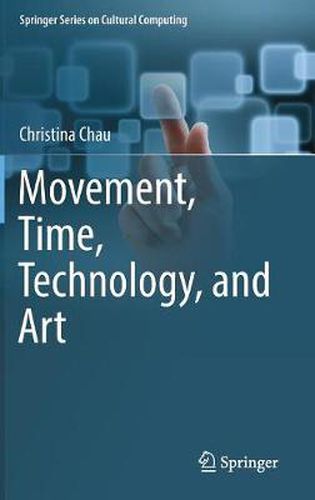Readings Newsletter
Become a Readings Member to make your shopping experience even easier.
Sign in or sign up for free!
You’re not far away from qualifying for FREE standard shipping within Australia
You’ve qualified for FREE standard shipping within Australia
The cart is loading…






This title is printed to order. This book may have been self-published. If so, we cannot guarantee the quality of the content. In the main most books will have gone through the editing process however some may not. We therefore suggest that you be aware of this before ordering this book. If in doubt check either the author or publisher’s details as we are unable to accept any returns unless they are faulty. Please contact us if you have any questions.
This book explores the ways in which artists use technology to create different perceptions of time in art in order to reflect on contemporary relationships to technology. By considering the links between technology, movement and contemporary art, the book explores changing relationship between temporality in art, art history, media art theory, modernity, contemporary art, and digital art. This book challenges the dominant view that kinetic art is an antiquated artistic experiment and considers the changing perception of kinetic art by focusing on exhibitions and institutions that have recently challenged the notion of kinetic art as a marginalised and forgotten artistic experiment with mechanical media. This is achieved by deconstructing Frank Popper’s argument that kinetic art is a precursor to subsequent explorations in the intersections between art, science and technology. Rather than pandering to the prevailing art historical assumption that kinetic sculpture is merely a precursor to art in a digital culture, the book proposes that perhaps kineticism succeeded too well, where movement has become a ubiquitous element of the aesthetic of contemporary art. If, as Boris Groys has recently suggested, installation has become the dominant mode of art in the contemporary age, then movement in real time with the viewer is used to aestheticise and explore the facets of our peculiar time.
$9.00 standard shipping within Australia
FREE standard shipping within Australia for orders over $100.00
Express & International shipping calculated at checkout
This title is printed to order. This book may have been self-published. If so, we cannot guarantee the quality of the content. In the main most books will have gone through the editing process however some may not. We therefore suggest that you be aware of this before ordering this book. If in doubt check either the author or publisher’s details as we are unable to accept any returns unless they are faulty. Please contact us if you have any questions.
This book explores the ways in which artists use technology to create different perceptions of time in art in order to reflect on contemporary relationships to technology. By considering the links between technology, movement and contemporary art, the book explores changing relationship between temporality in art, art history, media art theory, modernity, contemporary art, and digital art. This book challenges the dominant view that kinetic art is an antiquated artistic experiment and considers the changing perception of kinetic art by focusing on exhibitions and institutions that have recently challenged the notion of kinetic art as a marginalised and forgotten artistic experiment with mechanical media. This is achieved by deconstructing Frank Popper’s argument that kinetic art is a precursor to subsequent explorations in the intersections between art, science and technology. Rather than pandering to the prevailing art historical assumption that kinetic sculpture is merely a precursor to art in a digital culture, the book proposes that perhaps kineticism succeeded too well, where movement has become a ubiquitous element of the aesthetic of contemporary art. If, as Boris Groys has recently suggested, installation has become the dominant mode of art in the contemporary age, then movement in real time with the viewer is used to aestheticise and explore the facets of our peculiar time.